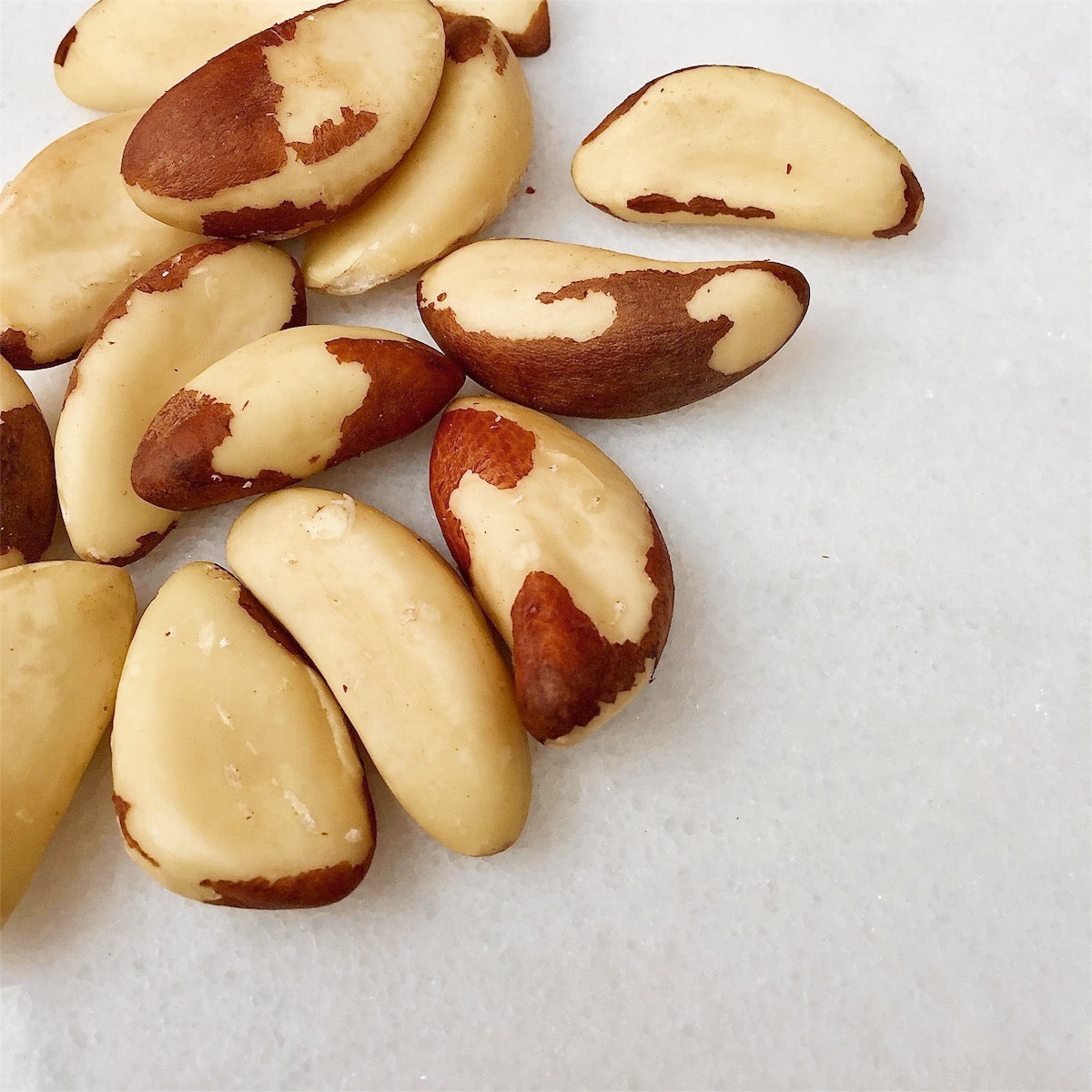Brazil Nut News

Bolivia produces most of the Brazil nuts that make it to market in North America. Depending on availability we sell either from there or Peru. Unfortunately due to extreme drought for the last couple of years, the harvest has been severely impacted. Most recently northern Peru has experienced torrential rains that have all but destroyed the annual mango and grape harvest. Challenging times to be sure. The price of Brazil nuts are expected to go up by up to 80% for the next while. Let's hope that the people harvesting these nuts are receiving some support during these times! Read below for some interesting info on the tasty Brazil Nut.
"The Brazil Nut is one of the most nutritious and largest nuts in the world—it grows in a softball-sized seed case that holds around 20 fat nuts—the Brazil Nut was planted extensively by ancient Amazonians and is now something that anthropologists look for as a marker for signs of pre-colonial human habitation in the jungle.
One of the largest and tallest trees in the Amazon and with a lifespan exceeding 1,000 years, each Brazil nut tree could feed thousands over many generations."
https://www.pastemagazine.com/articles/2017/05/earthrxthe-amazon-is-not-a-wilderness-its-an-advan.html
"Brazil Nuts cannot be grown in plantations, but depend on the ecosystem of forests. They live and thrive only in symbiosis with a multitude of plants and animals resident there. Above all, brazil nuts are dependent on the female orchid bee (Euglossa): only this bee, with its extra long tongue, is able to pollinate the large yellow flowers of the tree. Additionally, this bee species does not live in colonies and therefore couldn't be kept on a plantation. The local population in the structurally weak rainforest regions live exclusively on the wild brazil nut harvest, explains Mario Ebel. "People would cut down the rainforest if we didn't consume brazil nuts, because they would have to look for alternatives to survive. We took the trouble to calculate that one container protects up to 700 hectares of rainforest from deforestation, and feeds up to 90 people for an entire year." Excerpt from this article here http://www.freshplaza.com/article/170391/A-200g-bag-of-brazil-nuts-protects-up-to-87.5m2-of-rainforest
This is also quite interesting:
"Some of the tree species that are abundant in Amazonian forests today, like cacao, açaí, and Brazil nut, are probably common because they were planted by people who lived there long before the arrival of European colonists,"
https://www.sciencedaily.com/releases/2017/03/170302143939.htm